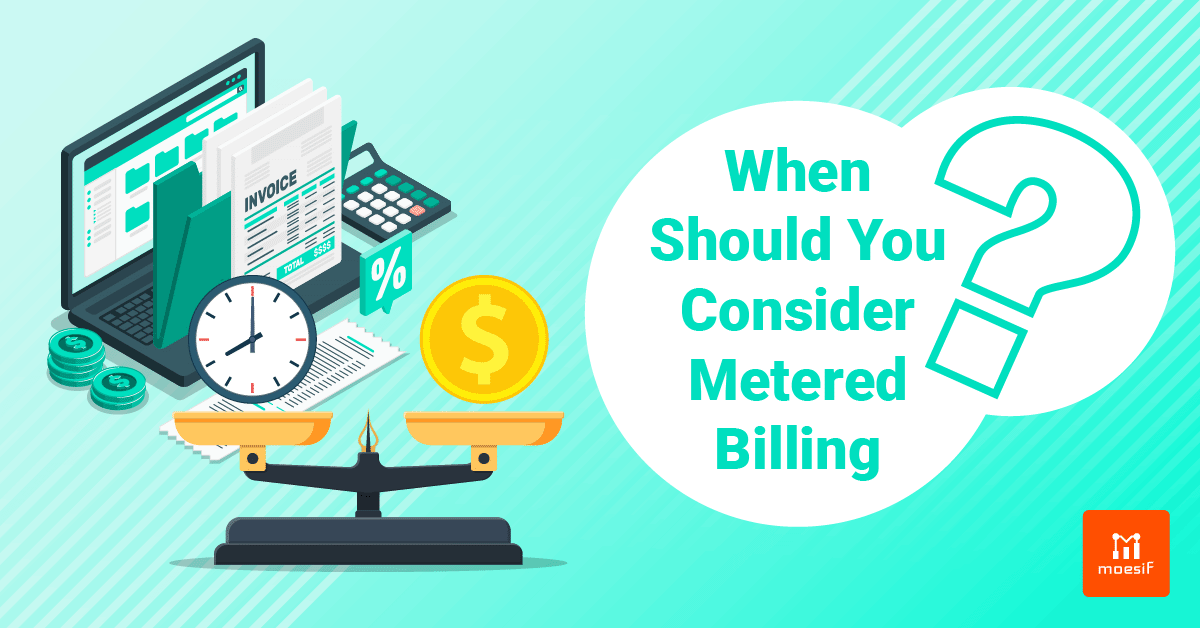When Should you Consider Metered Billing

Have you ever paid a bill for electricity, internet, or water? Was that bill based upon the amount of resources you used? If so, the pricing model your provider used was “metered billing.”
If you’re familiar with software tools, you might have heard of this model by different names: “Pay As You Go,” “Usage-Based Billing,” “Consumption-based Billing,” “PAYG.” In short, this payment model allows customers to pay only for services rendered. It’s not just for utilities. This value-based pricing model pairs well with customer-driven growth strategies, such as product-led growth. Plus, this revenue model scales in real-time.
SaaS companies are taking notice. Metered billing reduces the barrier to entry for new customers, and it’s becoming more common in software. For healthcare innovation platform provider NexHealth, usage-based billing from Moesif enabled them to start billing customers immediately and helped their API product quickly become a revenue generator.
So, should you consider adopting a metered-billing model?
If you’re building a SaaS platform, and your customers are…
…developers, or are highly technical
…early adopters of your service
…paying to use your API product
then, metered billing will likely accelerate your growth.
Buying any software service or feature, especially a new kind, is not a simple decision for your potential customers. It’s a decision that most will only make with buy-in from technical leaders of their organization. A frictionless, transparent billing experience builds customer acquisition and loyalty. This is particularly true for developer-led, and B2B SaaS companies you’d like to convert into customers.
Metered billing caters to the culture of autonomy amongst software professionals. Offering a technical decision-maker full control of their discovery process empowers them to integrate faster. Even so, success with any SaaS pricing model depends upon how you measure your core business offerings.
If you can track value metrics such as…
…number of API calls
…unique users
…unique sessions
…API keys
then metered billing can absolutely expand your customer base.
Tracking the key value metric for your service will ensure that you and your customers get the most out of your product. For example, an API product specializing in SMS offers value each time it sends a text message. Let’s say that the API sends out an average of 100 messages in one API call, as a batch. In this case, the value of the service maps to a multiple of the number of API calls sent. By attaching this value metric to the customer’s bill, they pay for the true value of the service.
The platform now can automatically bill customers who send more text messages, without penalizing those with lower usage rates. This transparency in pricing can improve revenue and build loyalty with existing customers.
It’s worth noting that metered billing carries the risk of misuse. Some customers will incur costs they don’t intend to pay. You can mitigate this issue by implementing rate limits using Moesif. Alternatively, you can build such functionality yourself, though doing so is often time-intensive and costly.
Despite that flaw, a metered billing model can mean the difference between growth and stagnation.
Can you afford to ignore developer buy-in?
If you are considering a usage-based billing model for your business, take a look at our complete implementation guide here. There, you can thoroughly qualify if this billing model is right for your business.
If you have more specific questions, we can help with that too.
- How can I use Moesif and Stripe for pay as you go billing?
- How does metered billing help me monetize my API?
- What is product-led growth?
Or, refer to our metered billing page. Whatever pricing model you choose, we hope it’s your winning strategy.
 Get the Biggest Business Impact from your APIs with Moesif
14 day free trial. No credit card required.
Learn More
Get the Biggest Business Impact from your APIs with Moesif
14 day free trial. No credit card required.
Learn More






